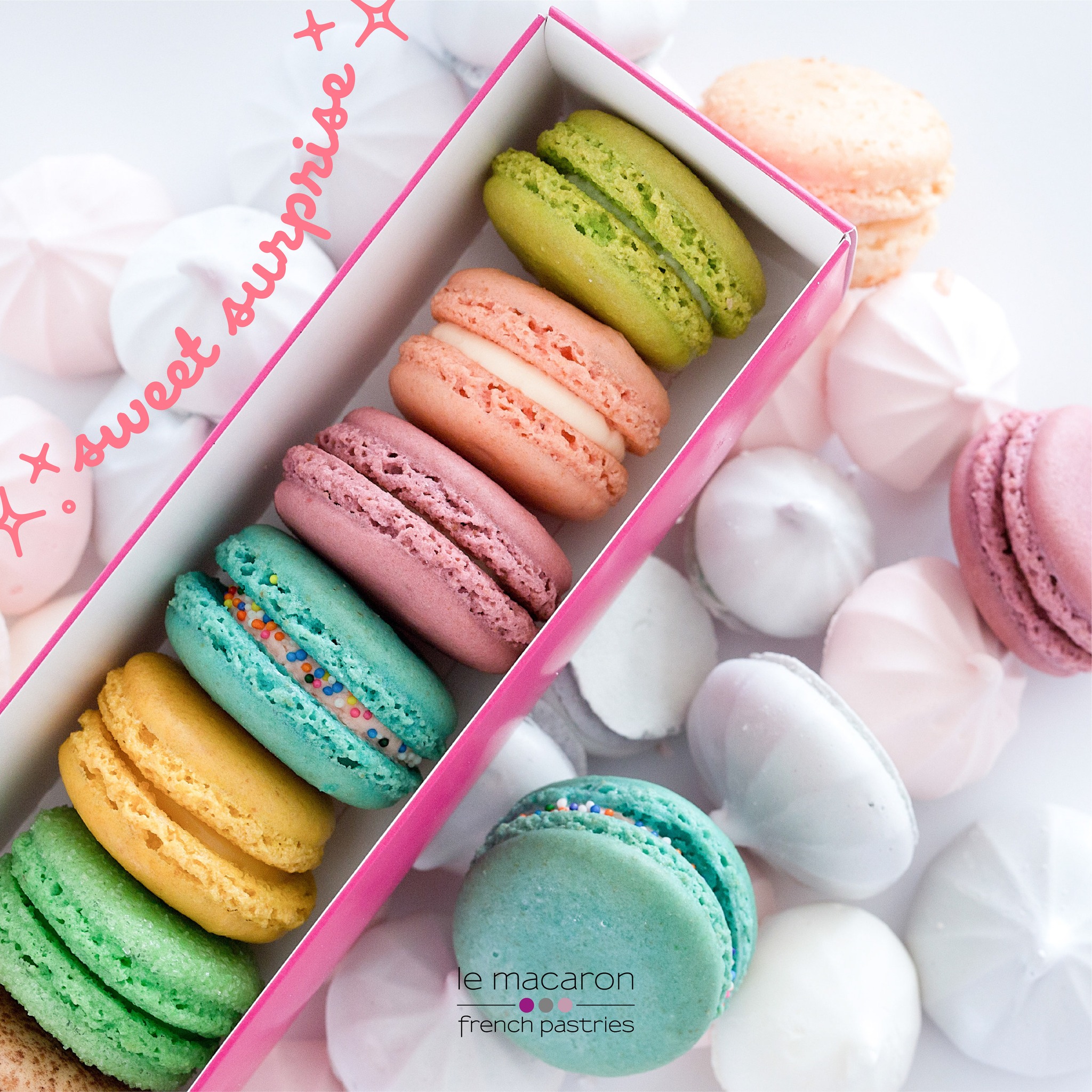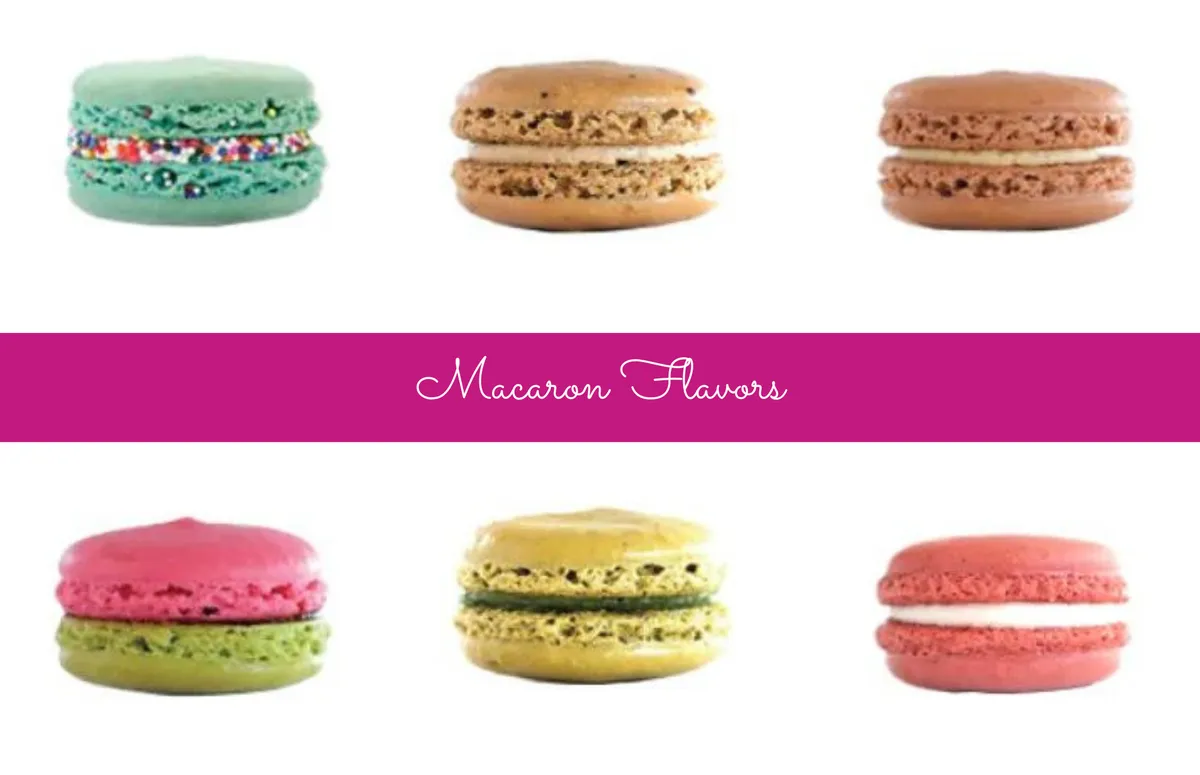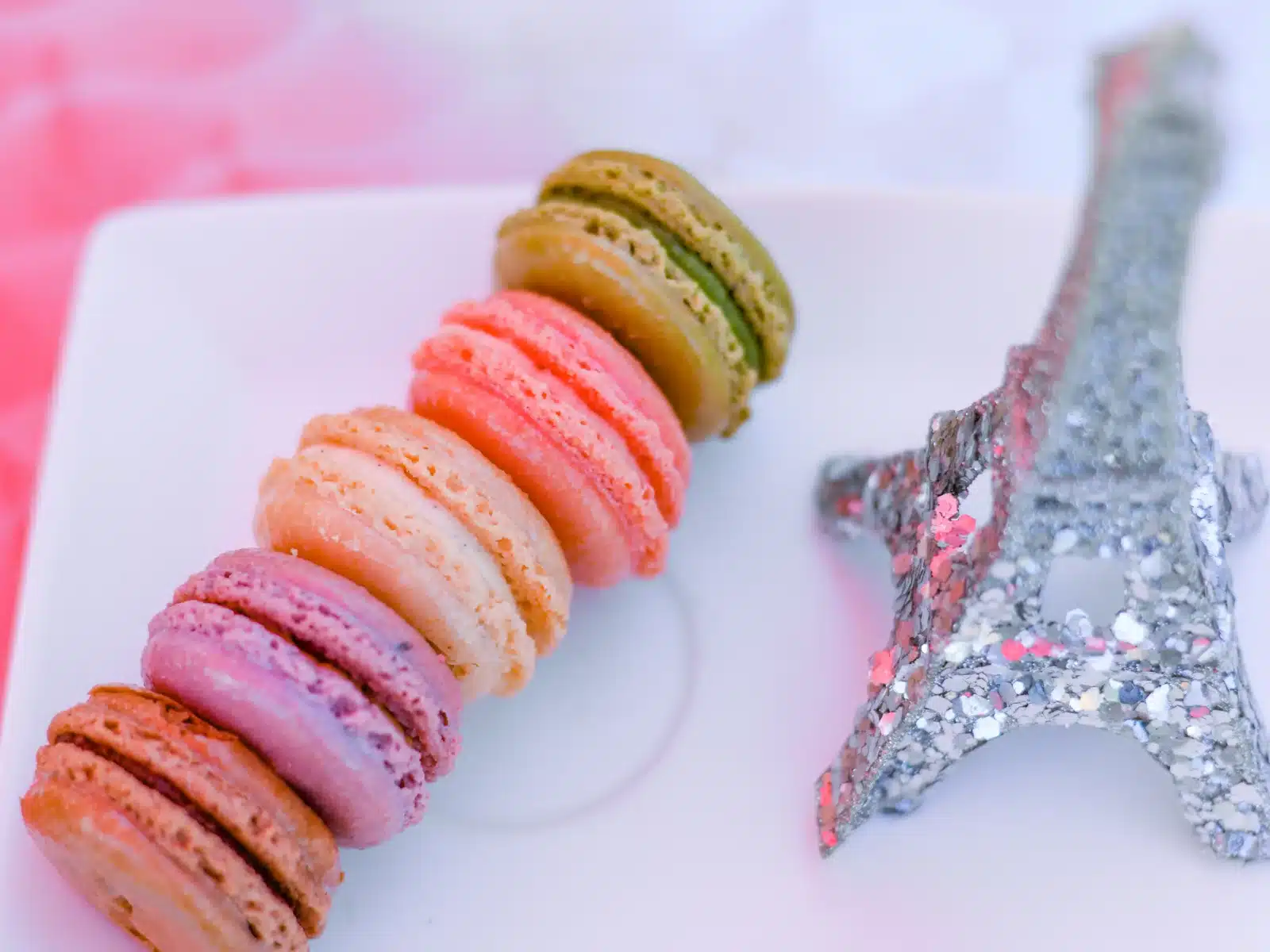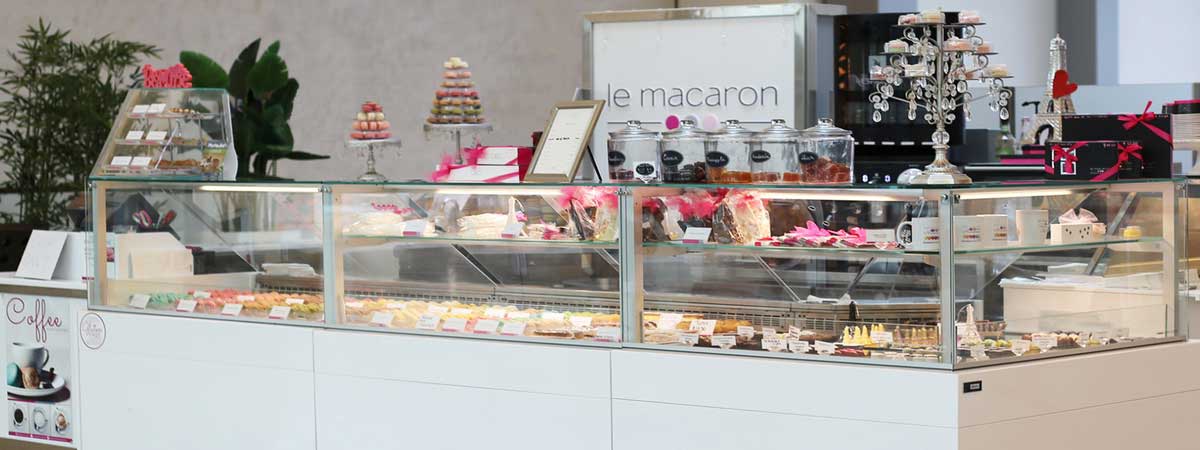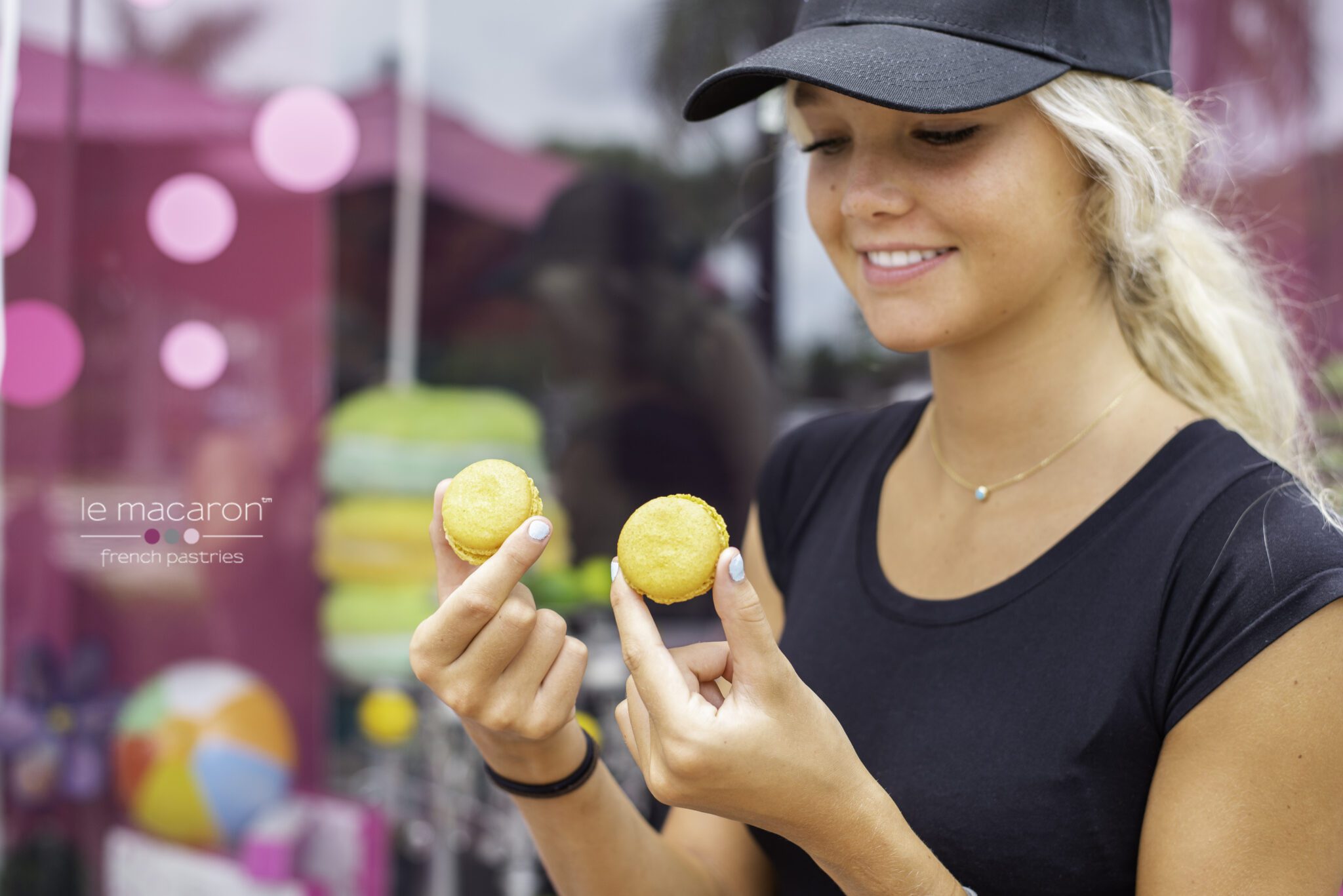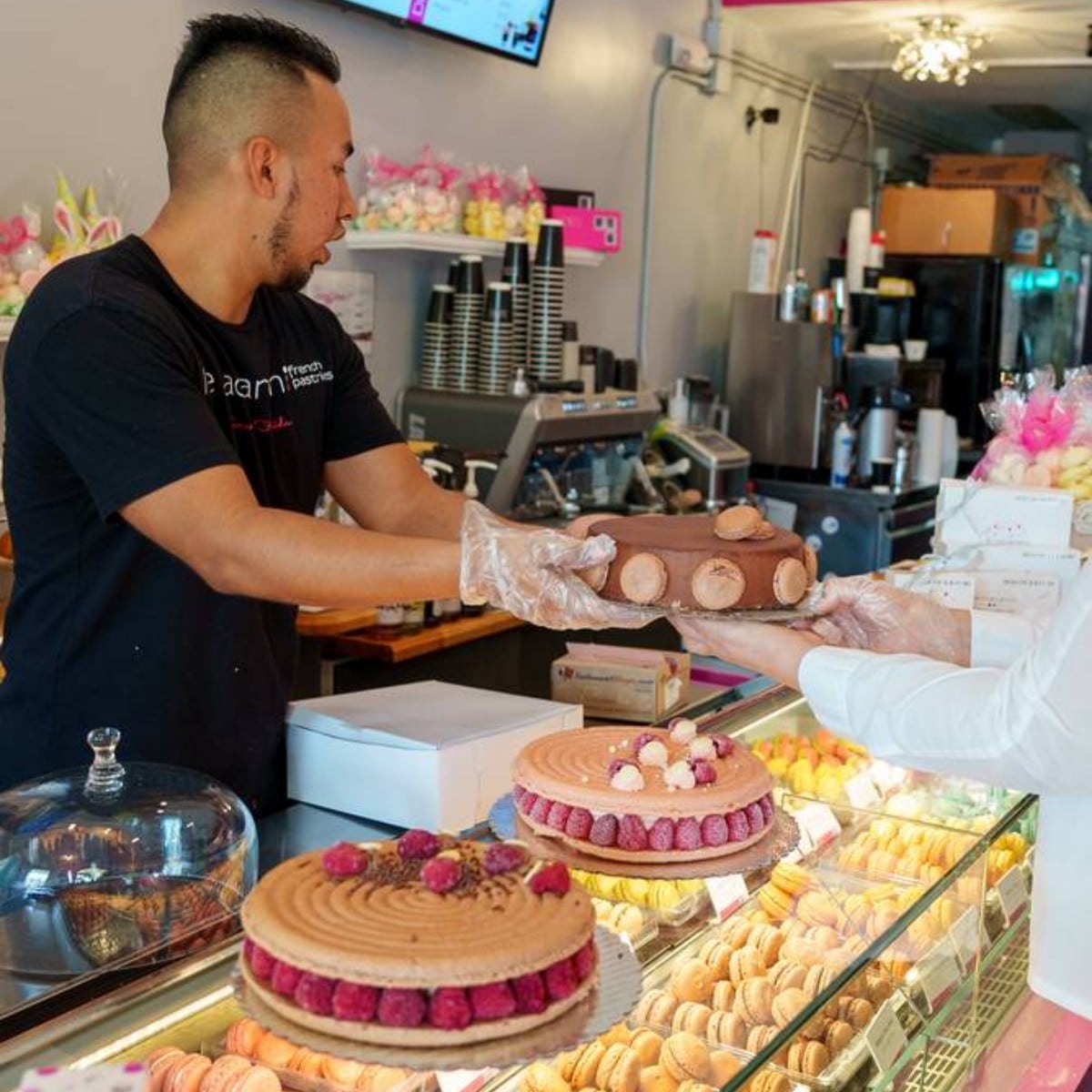This could be one of the most important questions of the ages, right up there with “Who built Stonehenge?” and “What’s the purpose of decaf coffee?” While macaroons and macarons are both confectionery desserts with some similarities, there are some significant differences that we think you should know about.
What is a Macaron? What is a Macaroon?
Simply put, both macarons and macaroons are meringue-based sweet confections that are baked as small cookies or cakes. Macarons are generally smaller, lighter and less sweet than macaroons, and macarons are typically more colorful and delicate. Macaroons are generally of a lumpy, non-uniform shape, sweeter and more dense than macarons.
Macaron vs Macaroon: How Different Are They?
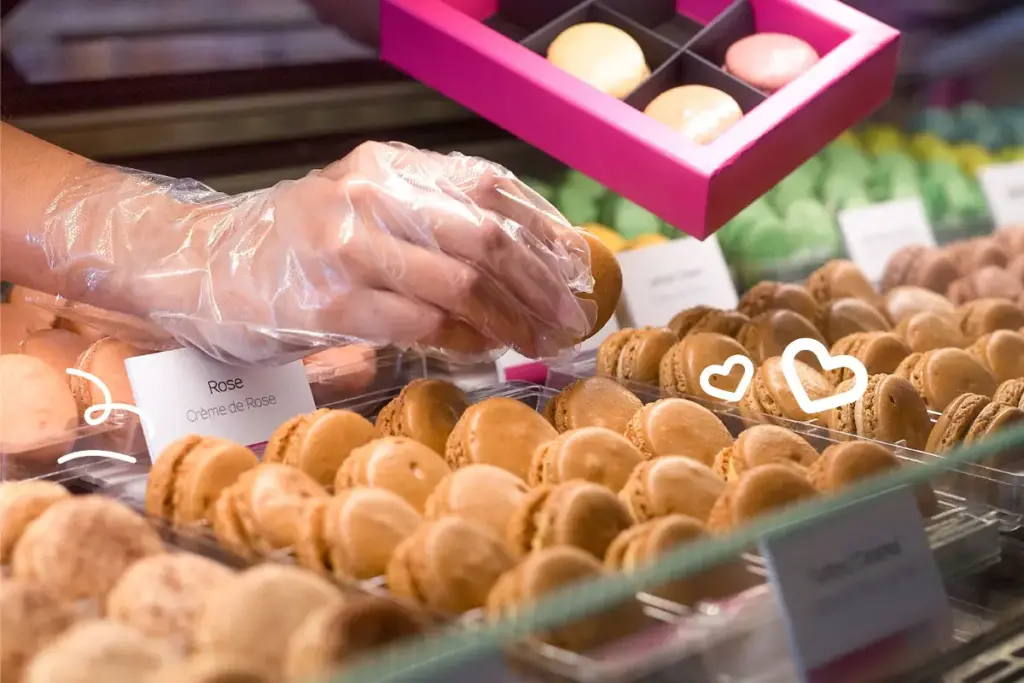
First, we’ll start with the basic differences between macarons vs macaroons, such as how to pronounce each treat followed by the ingredients, textures and consistencies. Then we’ll take a peek at how each confection is made.
Pronunciation
- Macaron is pronounced “mac-uh-ron” with the “ron” part sounding like the word “gone”
- Macaroon is pronounced “mac-uh-roon” with the “roon” part sounding like the word “moon”
Ingredients, Texture, and Consistency
Macarons and macaroons share the same core ingredients of egg whites and sugar, but that’s where the similarities pretty much stop. The variety of shapes, textures, flavors, and consistency differs considerably between macarons vs macaroons.
First, let’s look at Macarons:
- Macarons are made of a meringue that includes almond flour made from finely ground blanched almonds
- Macarons consist of two sandwich-like halves that have smooth tops and slightly rough edges on the bottom of each half
- Macarons are typically filled with a delicious layer of jam, ganache, or buttercream
- Macarons are colorful and light, usually tinted with food coloring that matches the filling
- Macarons are light, fluffy, and mildly sweet with a delicate eggshell-like crust
Macarons are made from almond flour, powdered sugar, egg whites, and granulated sugar. The ingredients are combined to create a smooth, fine meringue which is then used to carefully make the classic, familiar cookie halves. The two cookie halves can then be sandwiched with a variety of fillings, including ganache, buttercream, fruit curd, or jam, which adds to their wide range of flavors and colors.
Now, let’s look at Macaroons:
- Macaroons are made of a meringue mixed with shredded coconut or nuts
- Macaroons consist of a single “lump” that lacks a uniform shape
- Macaroons are sometimes flavored with lemon or honey, and may be glazed with chocolate, jam, or other toppings
- Macaroons are dense, course, very sweet, and larger than macarons
Macaroons are characterized by their simplicity. They are primarily made from shredded coconut, sugar, and egg whites. The coconut lends a rich, nutty flavor and a chewy texture to macaroons. The mixture is often sweetened with condensed milk or sugar, and the cookies can be flavored with ingredients like chocolate, almonds, or even citrus zest for added variety.
Macarons vs Macaroons: The Art of Confection
The primary reason behind why Macarons and Macaroons look and taste so differently is the method in which each is made. The task of making macarons vs macaroons is that macrons are more time consuming and require more craftsmanship, whereas macaroons are simple and easy to make.
- Macarons involve the process of “macaronage” whereby powdered sugar and finely ground almonds (almond flour) are slowly into a whisked egg-white meringue
- Macarons are painstakingly piped onto a flat surface until a thin skin forms and then baked to perfection
- The fillings used for macarons are made in a separate container and added between the two “sandwich” halves
- With macaroons, the ingredients are simply mixed together, then portioned out onto a flat surface in lumps, then baked to a desired consistency
- There are even some macaroon recipes that don’t require baking at all
In addition to the differences in the methods of making macarons vs macaroons, macarons are best enjoyed within one or two days after baking, whereas macaroons can be frozen for up to 3 months.
What’s the difference in texture and appearance of a macaron vs. a macaroon?
There’s a significant difference in both the texture and appearance between macarons and macaroons, mainly owing to the difference in their ingredients.
Macarons are renowned for their delicate, crisp exterior and soft, chewy interior. When properly made, they have a smooth, shiny shell with a signature “foot” or ruffled edge. Macarons come in a wide array of colors and flavors, making them visually appealing and perfect for special occasions or gifts.
Macaroons, in contrast, have a rustic, raw appearance. T
They are typically dropped onto baking sheets in mounds or scoops, resulting in irregular shapes with a golden-brown exterior. The shredded coconut creates a textured surface that’s slightly crispy on the outside and chewy on the inside. Macaroons lack the colorful and refined allure of macarons, but they have a comforting, homemade charm.
What flavors are available for macarons vs. macaroons?
Both macarons and macaroons offer a wide range of flavors to cater to different tastes, but when it comes to sheer variety, macarons offer the most options, by far.
Macarons are celebrated for their versatility when it comes to colors and flavors. Their meringue shells can be infused with a variety of ingredients, including cocoa powder, ground pistachios, or even matcha powder. They can also be colored to reflect special occasions, or holidays, or to simply compliment the filling.
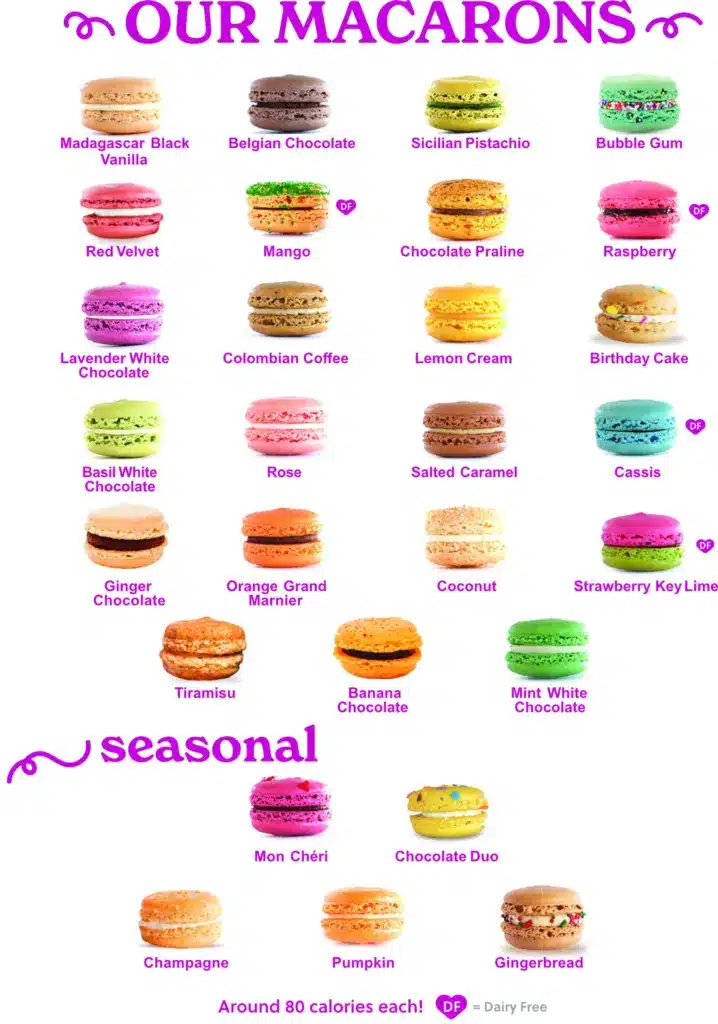
The fillings are where the flavor possibilities truly shine. From exotic choices like lavender, rose, pistachio, mango, passion fruit, and key lime to classic favorites like chocolate, vanilla, bubble gum, and, yes, coconut, macarons cater to a diverse palate and any occasion. Le Macaron French Pastries offers over 20 flavors and can customize flavors upon request.
Macaroons are considerably less diverse in color and flavor than macarons. The primary flavor of macaroons comes from the coconut itself, with variations like chocolate-dipped or almond-topped macaroons adding subtle nuances. The simplicity of macaroons makes them a comforting treat with a familiar coconutty sweetness.
Where did Macarons and Macaroons Come From?
Macarons and Macaroons share a similar history in addition to some of their ingredients. It’s widely accepted that both have their origins in Italy and came to France in the 1500s by way of Catherine di Medici.
What are the origins of the macaron vs. macaroon?
When looking at the historical origins of the macaron vs. macaroon, most accounts trace both confections back to Italy, where the word “maccherone” (meaning “paste”) eventually became macaroon. Then, in 1533, Catherine de Medici introduced the modified recipe to France as the wife of King Henry II. The confection became known as the macaron and took on a definitive French flair as the recipe was changed over the years. It was supposedly sometime later that the differences between macarons and macaroons evolved, with many Italian Jews adopting macaroons during Passover as a flour-free treat, and the rise in the 1930s of the “sandwich” style macaron with the addition of jams and other fillings.
Macarons are often considered the more refined and elegant of the two desserts. These dainty almond meringue cookies are believed to have been popularized by the famous French pastry chef, Pierre Hermé.
Macaroons, on the other hand, are a simpler, dense, and chewy, coconut-based confection with a history that extends across Europe and the Middle East, with variations in recipes and names.
Macarons vs Macaroons: Let’s Review
It can be definitively said that, despite the similarity of ingredients and history, macarons and macaroons are markedly different confections. Macarons are lighter, less sweet, have more flavor variations, take more skill to make, and are more delicate than macaroons. Therefore it is very important to know to differentiate the two, especially if you desire the more delightful of the two treats… which, of course, are macarons.
When it comes down to the question of macaron vs. macaroon, of course, we champion the macaron as the hands-down winner of the battle. With their elegant appearance, wide range of flavors, and delicate texture, macarons cater to those seeking a refined sweet indulgence.
Macarons are not just delightful little cookies; they are symbols of artistry, precision, and the joy of indulgence. If you come across this historic treat, savor it for what it truly is – a delicious masterpiece that transcends misconceptions and delivers pure, unadulterated pleasure to your taste buds. For your next macaron experience, seek out your local Le Macaron French Pastries and explore the wonderful colors and flavors that macarons offer.
If you are one of the unfortunate souls without a local Le Macaron French Pastries store, why not consider opening your own franchise? For more information about owning and operating a Le Macaron French Pastries franchise, get started by filling out the inquiry form on our website. We look forward to helping you get started!
Where Is The Best Place to Buy a Macaron?
Of course, we think the best place to buy macarons is at Le Macaron French Pastries. We encourage you to visit your local Le Macaron French Pastries®location, and if you aren’t fortunate enough to have a store in your area, you can order online.
Better yet, why not open your own Le Macaron French Pastries®franchise? You can see all of our current locations and find out more about franchising at our website.
